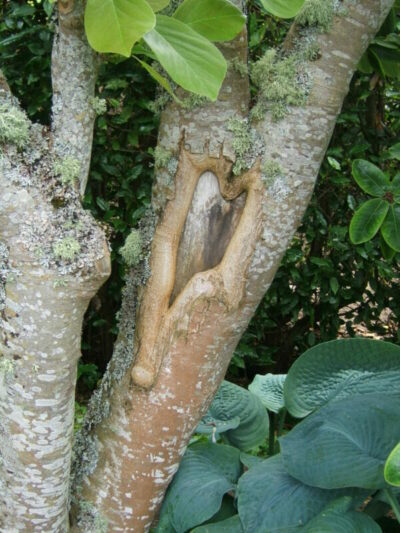
It may seem like there are so many rules in regards to pruning that it can be easy to get overwhelmed and intimidated.
How and when are the questions I get asked most often about pruning. The reality is that, if pruning properly and thoughtfully, you can prune many times during the year. But when is the best time to prune? In western Washington (zone 8b), most pruning should be done in February or early March while plants are dormant, just before new growth emerges.
Someone once told me a trick to remember when to prune was by associating it with the Valentine’s Day Massacre. Now, I admit that’s not the most pleasant thought, however, it certainly is something that is stuck in my brain!
If you prefer, just replace that thought with giving your garden some love- a Valentine’s Day gift to your garden!
Now that you know when to prune, let’s talk about some things to consider before you start.
Before you start pruning:
- Identify the plant you want to prune
- Understand why you want to prune it
- Do some quick research on pruning that specific plant
Step 1: Identify your plant
The trickiest part of any pruning task can be understanding how to prune specific plants to bring out their best traits.
This is why it is so important to know the plant you are looking at. Now, we’re not talking full botanical names with variety here. Just knowing it’s a Rhododendron and not a Dogwood is a good start. There are also many plant ID apps out there that can help identify your plant if you are unsure.
There are a few times when it’s good to know a bit more, such as with clematis, raspberries, hydrangeas, and roses, because they have some more specific needs (a topic for another post).
If you cannot figure out the name of your plant, knowing when the plant flowers can help to guide you. For example, if you know it flowers in July or later you are typically safe to prune back in early spring without affecting the flowering for that year. Alternatively, if it flowers prior to that, any hard pruning may cause you to lose this year’s flowers.
Step 1: Know WHY are you pruning?
There are many reasons to prune and the truth is that most of them are to benefit us humans, not to benefit the plant.
Pruning off dead, diseased or crossing branches are always a good decision for the health of the plant but beyond that, pruning is done to fulfill our personal desires. Do you want to prune to keep the plant smaller, narrower, train it into a hedge, increase fruit or flowers…or just because you think it is something you’re supposed to do? Many plants need very little to no pruning at all.
Step 3: Do some research
Once you know what you want to prune, do some quick research to determine any special requirements that plant your plant may have. For example it may tolerate heavy pruning or it may best to spread major pruning over a few seasons, taking off a bit at a time.
There are many good books, including The Pruners Bible by Steve Bradley. It is easy to follow, has great diagrams and references most common garden plants including berries and fruit trees.
OK, let’s get into the HOW to now…
PRUNING SHRUBS & TREES
Pruning woody shrubs and trees are what most people seem to get hung up on.
The first thing I teach people when pruning woody shrubs and trees is that there are two different types of cuts; heading cuts and thinning cuts.
Each of these cuts creates a different result. Once you understand this basic principle, you will better understand how to prune each plant.
Heading cut: Heading cuts take the tip (or “head”) off of the end of a branch.
The result of this cut is that it will increase growth near the area of the cut. Use this type of cut when you want this effect, such as when a plant has a flat side and you want to increase growth in that area. When taking a heading cut be sure to cut at an angle and near a bud so you don’t leave a stub.
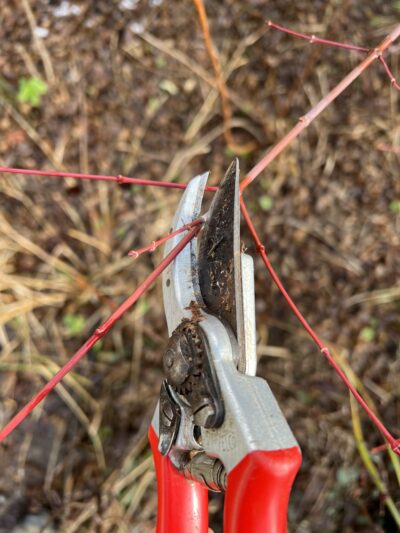
Heading cut
Thinning cut: a thinning cut takes occurs at the point where one branch meets another.
The result of this cut is that energy is distributed to the whole plant, rather than the tip of it. Thinning cuts give a much more natural look and are best for ‘thinning’ out and giving more air circulation to the plant. A plant with better air circulation will be less prone to disease.
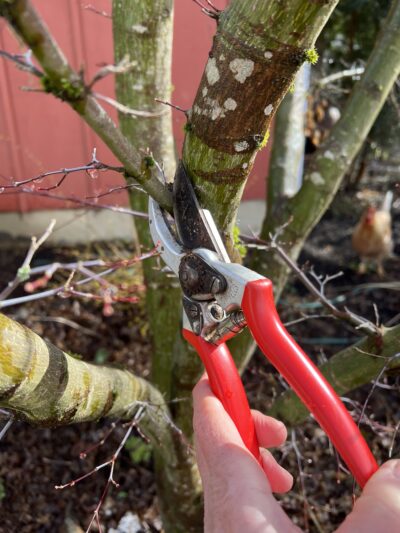
Thinning cut
Its is important on trees to avoid cutting into the ‘collar’. The collar is the ridge of tissue where the lateral branch comes off of the main branch. This tissue is what will help the plant to ‘heal’ after it is cut
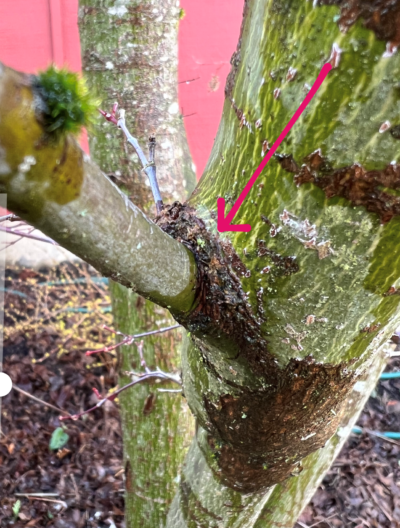
tree collar
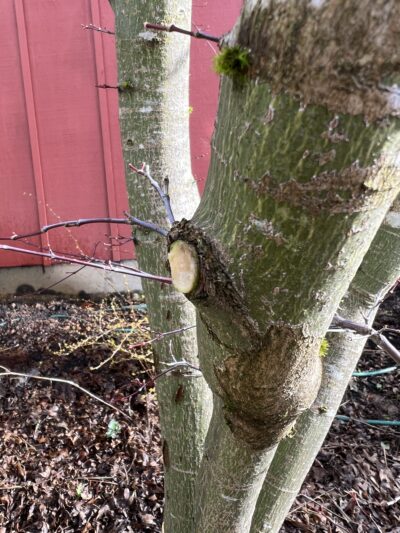
proper thinning cut taken just outside the collar
CUTTING BACK FERNS, PERENNIALS & GRASSES
Herbaceous plants that die back to the ground at the end of the season can be cut back in fall to late winter.
I like to leave some up for winter interest, for birds, and overwintering beneficial insects. I clean them up in February before new growth comes on. Depending on the plant, you may be able to cut back, rake out or just pull off the dead growth from last year. This requires no specific skill other than making sure not to cut off this year’s flower buds.
Ferns, grasses and perennials that are evergreen can tend to look a little tattered by late winter (think hellebores, heucheras, and sedges). In February trim back herbaceous evergreen plants to the ground, being careful not to damage new growth.
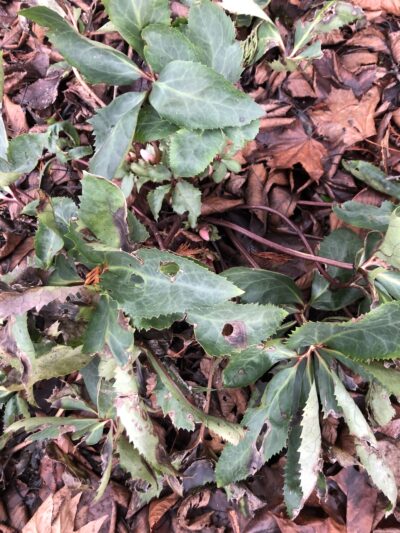
Hellebore in winter that needs to be cut back (without removing flowers)
Early blooming perennials have already set flower buds by winter so it’s best to wait until they have finished blooming to cut them back. If you mistakenly cut back an early bloomer it should not damage the plant but you will likely not get any flowers this year.
Now that you understand the basics, I’ll leave you with a few tips and reminders that will help you:
- Don’t cut off too much at time: A plant can get stressed if you remove too much of it at one time, so try not to remove more than a third of the plant at a time.
- Prune lightly and focus on thinning cuts: Unless you are taming a hedge you want to focus on thinning cuts, cutting back to the point where one branch meets another.
- Use the right tool for the job: A SHARP and clean pair of bypass shears, loppers and a pruning saw will assure you have the right sized tool for what you need to remove, making your job easier and the plant healthier. For taller trees a pole pruner can also come in handy.
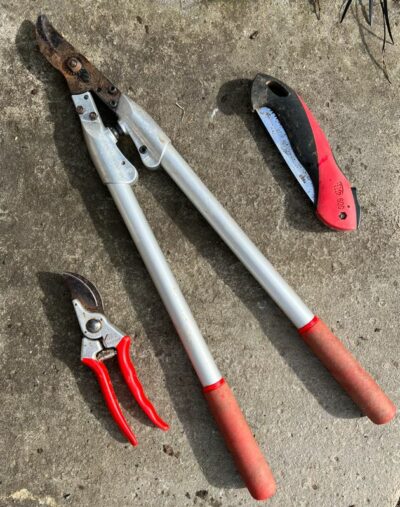
Felco pruners, loppers, and folding saw
- When in doubt prune soon after it blooms: This will assure you have flowers this season but be sure to prune quickly after flowering so you don’t remove next year’s flower buds.
- If cutting back hard: Before you start do some quick research to find out if your plant can handle heavy pruning. If you plan to do some major pruning, doing so in February to March (right before the plant starts growing again) is ideal so you are not left looking at the cuts all winter. New growth will emerge soon after cuts are made disguising your work.
The absolute best way to learn how to prune is to get out there and do it! You may make mistakes and that’s ok, you will learn from them!
Most plants are pretty resilient. Just don’t practice on your rare specimen Japanese maple 🙂 Start start small and learn as you go- you’ve got this!
Do you have more questions about pruning? If so, leave them in the comments and I will do my best to answer them!
Heidi
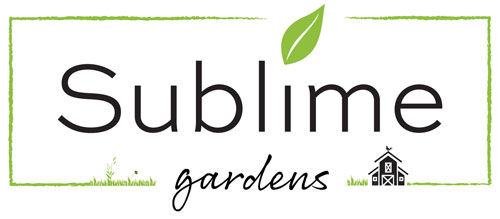

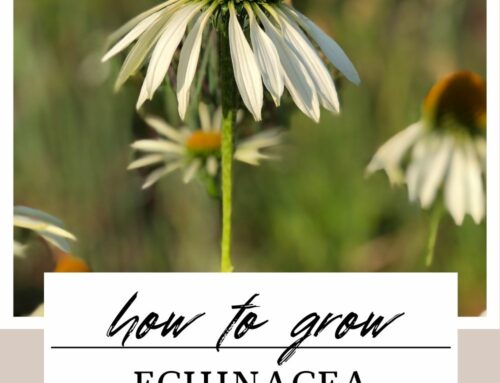


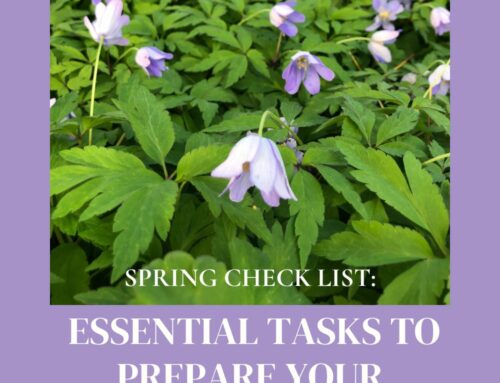
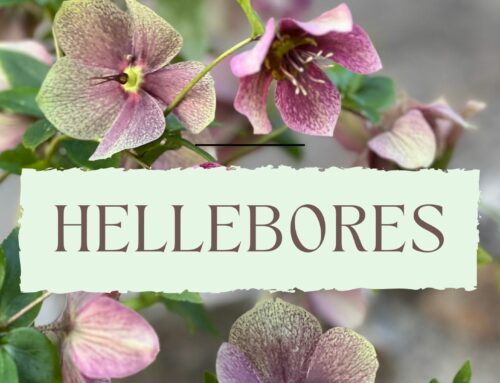
Leave A Comment